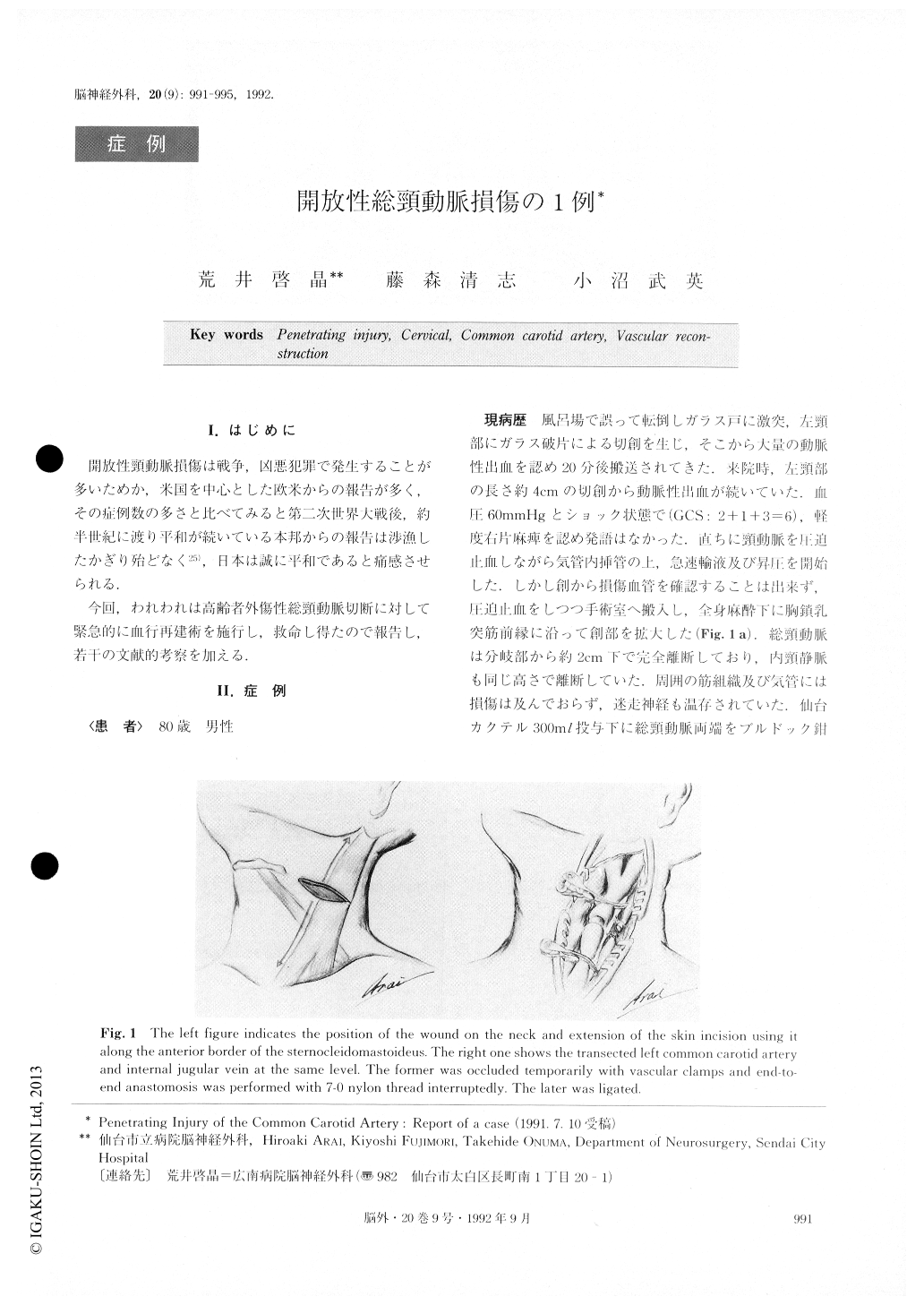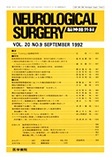Japanese
English
- 有料閲覧
- Abstract 文献概要
- 1ページ目 Look Inside
I.はじめに
開放性頸動脈損傷は戦争,凶悪犯罪で発生することが多いためか,米国を中心とした欧米からの報告が多く,その症例数の多さと比べてみると第二次世界大戦後,約半世紀に渡り平和が続いている本邦からの報告は渉漁したかぎり殆どなく25),日本は誠に平和であると痛感させられる.
今回,われわれは高齢者外傷性総頸動脈切断に対して緊急的に血行再建術を施行し,救命し得たので報告し,若干の文献的考察を加える.
An eighty-year-old man slipped in the bathroom and received a deep slash wound in his left neck caused by a broken fragment of the bathroom door. A fragment of the glass stuck into his left neck. He was carried to our clinic after 20 minutes in a state of shock and showed right hemiparesis and aphasia. Following im-mediate orotracheal intuhation and emergent therapy for shock, he was transferred to the operation theater for massive arterial bleeding from the wound. The left common carotid artery and internal jugular vein were exposed by extending the skin incision from the cervic-al wound along the anterior border of the left sterno-cleidomastoideus. The left common carotid artery and the internal jugular vein were simultaneously trans-ected, and end-to-end anastomosis of the carotid artery was performed under the administration of 300 ml of Sendai Cocktail. The occlusion time of the left common carotid artery was approximately 50 minutes. Right hemiparesis and total aphasia did not change im-mediately after the surgery. The postsurgical CT scan showed an infarction in the posterior portion of the left middle and posterior cerebral arteries. However, after undergoing rehabilitahon for a month, the patient could walk alone, and his aphasia improved.
Many large series of penetrating injuries to the caro-tid artery were reported after World War II. Most casualties were younger males injured by gunshot. In middle cervical injury, the common carotid artery is the most vulnerable vessel, although other large vessels such as the external and internal carotid arteries as well as the internal jugular vein may be involved, often causing neurological deficits and shock. Vascular recon-struction is the best treatment of this injury. I lowever, in high-cervical injury, the repair of the carotid artery requires dislocation or resection of the mandible, or ligation of the internal carotid artery and anastomosis of STA-MCA in sonic cases. In lower-cervical injuries, thoracotomy is necessary to repair the subclavian artery or the thoracic duct. The prognosis of such vascular reconstruction is affected by the presence of preoperative neurological deficits which are indicators of poor prognosis. Conservative therapies, however, cannot rescue the patients, so aggressive vascular re-construction as the only hope of saving them.

Copyright © 1992, Igaku-Shoin Ltd. All rights reserved.


